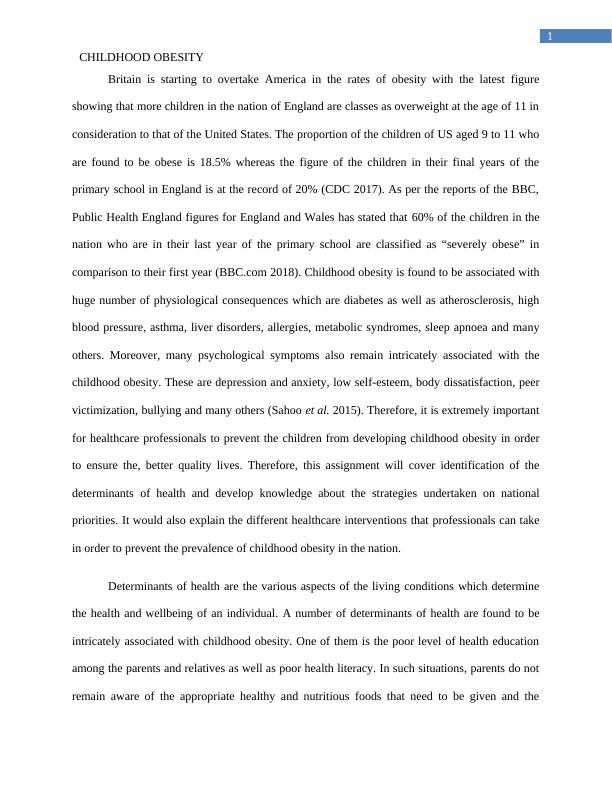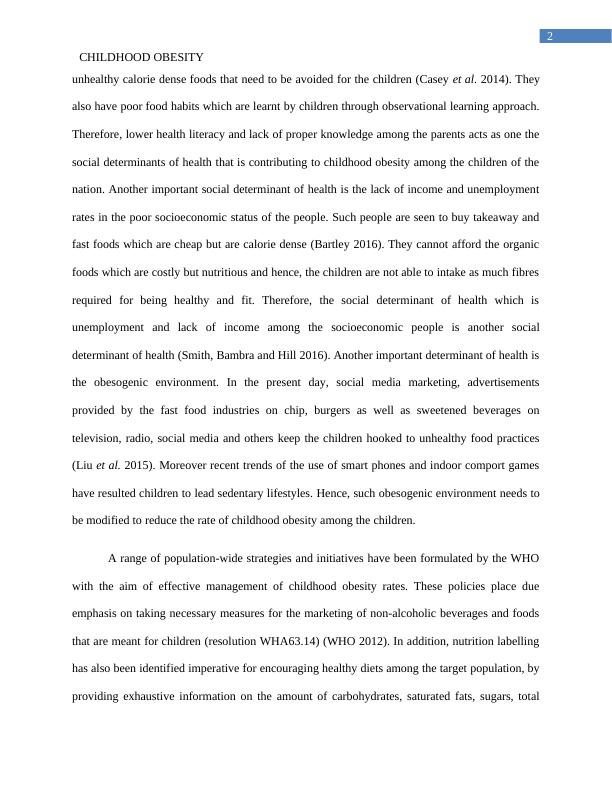Childhood Obesity: Determinants, Strategies, and Healthcare Interventions
Explore the factors contributing to current public health issues in own nation and explain the different levels of public health intervention.
9 Pages2102 Words82 Views
Added on 2023-01-19
About This Document
This assignment explores the determinants of childhood obesity, strategies for prevention, and healthcare interventions. It discusses the impact of poor health education, socioeconomic factors, and obesogenic environments. The assignment also highlights population-wide policies and initiatives, as well as the role of healthcare professionals in addressing childhood obesity.
Childhood Obesity: Determinants, Strategies, and Healthcare Interventions
Explore the factors contributing to current public health issues in own nation and explain the different levels of public health intervention.
Added on 2023-01-19
ShareRelated Documents
End of preview
Want to access all the pages? Upload your documents or become a member.
Health Promotion Plan for Preschoolers
|13
|3448
|26
Community Health And Diseases Australia Discussion 2022
|7
|1376
|14
Health Promotion and Disease Prevention
|12
|1131
|27
Childhood Obesity Facts & Statistics
|4
|2365
|478
Applied System Thinking in Public Health: Addressing Obesity in Australia
|7
|1639
|201
Childhood Obesity and its Implications
|10
|3450
|66



